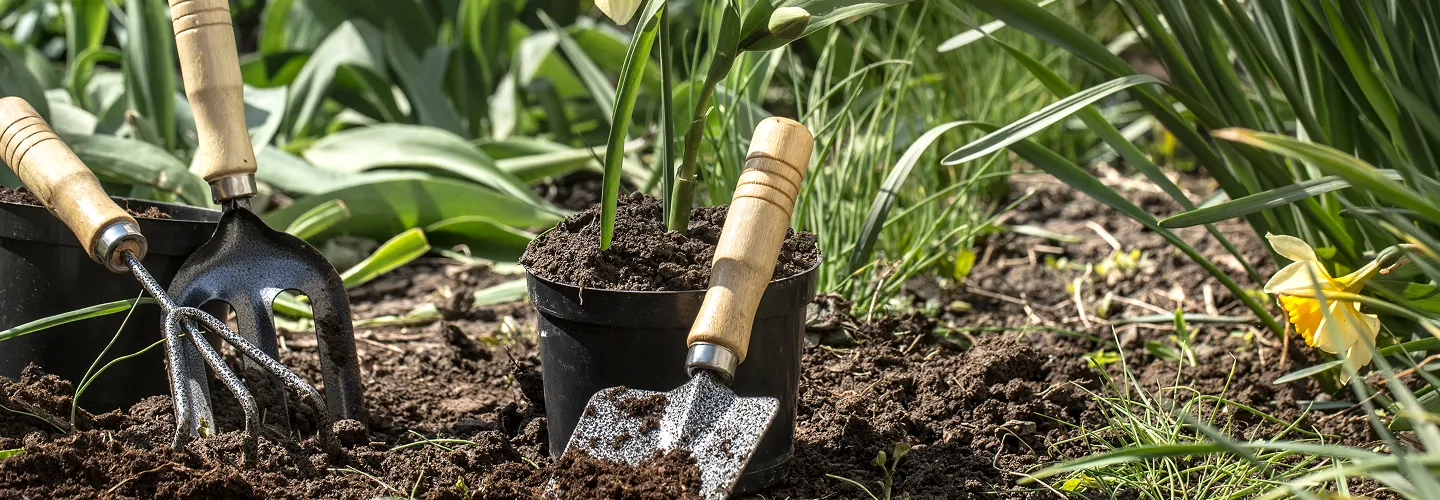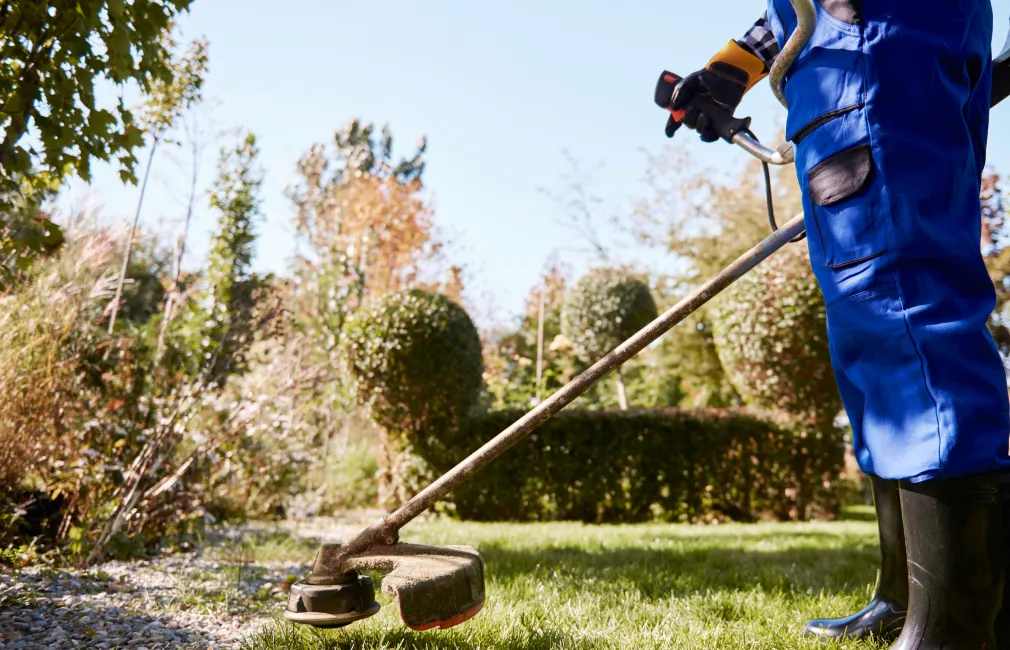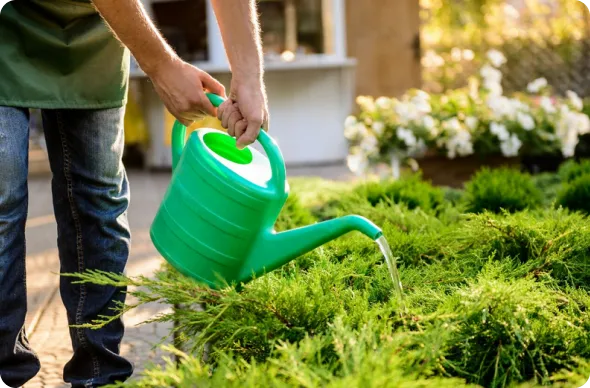
Holbrook Lawn Aeration Services
Choose our expert lawn aeration services to ensure deeper root growth, improved soil health, and a greener, more resilient lawn that stands out in your neighborhood.
Get a Free QuoteWhen to Schedule Lawn Aeration in Holbrook, MA – Seasonal Guide
In Holbrook, MA, the best times to schedule lawn aeration are typically in early spring or early fall, when grass is actively growing and can recover quickly. Holbrook’s climate features cold winters and warm, humid summers, so timing aeration to avoid extreme temperatures and periods of drought is essential. For neighborhoods near Pine Street or the Holbrook Town Forest, where shade coverage and mature trees are common, soil compaction can be a particular concern, making regular aeration even more important.
Local environmental factors such as the average last frost date in April and the risk of summer droughts should guide your aeration schedule. Lawns in areas with heavy clay soils, like those found near South Franklin Street, may benefit from more frequent aeration to improve drainage and root growth. Always check for any municipal guidelines or seasonal restrictions by visiting the Town of Holbrook’s official website before scheduling your service.
Local Factors to Consider for Lawn Aeration in Holbrook
- Tree density and shade coverage, especially in established neighborhoods
- Soil type (clay, loam, or sandy soils)
- Recent precipitation patterns and drought risk
- Terrain and drainage issues, particularly in low-lying areas
- Municipal restrictions or recommended service windows
Benefits of Lawn Aeration in Holbrook

Improved Soil Health
Enhanced Grass Growth
Better Water Absorption
Reduced Soil Compaction
Increased Nutrient Uptake
Stronger, Greener Lawns

Holbrook Lawn Aeration Types
Core Aeration
Spike Aeration
Liquid Aeration
Slicing Aeration
Manual Aeration
Aeration with Overseeding
Our Lawn Aeration Process
Site Evaluation
Preparation
Core Aeration
Cleanup
Post-Aeration Review
Why Choose Holbrook Landscape Services

Holbrook Homeowners Trust Us
Expert Lawn Maintenance
Competitive Pricing
Professional Team
Satisfaction Guarantee
Personalized Service
Reliable Scheduling
Contact Holbrook's Department of Public Works for Soil Core Disposal & Aeration Debris Management
Meticulous management of extracted soil plugs following turf perforation procedures represents a cornerstone of responsible landscape stewardship throughout Holbrook, Massachusetts. The town's Department of Public Works has developed comprehensive protocols for organic yard debris processing that substantially affect property owners managing post-aeration materials. Comprehending these municipal standards ensures regulatory compliance while fostering environmentally sustainable soil cultivation practices across this Norfolk County community, distinguished by its glacial headwaters location and close-knit residential neighborhoods.
Holbrook Department of Public Works
50 North Franklin Street, Holbrook, MA 02343
Phone: (781) 767-1800
Official Website: Department of Public Works
Municipal authorities recommend allowing extracted plugs to naturally decompose on turf surfaces, restoring valuable organic compounds and essential mineral nutrients to the soil ecosystem. When removal becomes necessary due to excessive accumulation, residents must employ biodegradable paper receptacles exclusively, avoiding synthetic materials that violate Massachusetts General Law Chapter 111, Section 150A. Optimal cultivation strategies encompass allowing plugs to air-dry 48-72 hours before redistribution through mowing operations, positioning collected materials away from residential drainage systems and headwater buffer zones, thoroughly cleaning hard surfaces to prevent edaphic migration into storm infrastructure, and synchronizing with municipal transfer station operating schedules for proper composting. This methodology proves particularly advantageous for Holbrook's compact glacial till soils that require organic enrichment to enhance structure and counteract challenging growing conditions.
Understanding Soil Compaction in Holbrook's Glacial Headwaters Till and Residential Development Deposits
Holbrook's intricate geological composition encompasses glacial till formations serving as headwaters for the Cochato River system, interspersed with residential development areas and localized wetland basins, creating specialized soil cultivation challenges throughout this southeastern Massachusetts suburban community. According to USDA Web Soil Survey documentation, predominant soil classifications include Paxton and Woodbridge fine sandy loams on glacial till uplands, Canton and Charlton complexes on elevated knolls and residential developments, plus Ridgebury fine sandy loam and Whitman fine sandy loam in poorly drained headwater depressions. Urban land complexes reflect extensive residential modification in developed neighborhoods, while organic Freetown and Scarboro series dominate wetland areas along Cochato Brook headwaters and associated tributary drainage networks.
The glacial till formations intrinsically contain dense clay-enriched substrates that severely restrict hydraulic infiltration and root expansion, conditions intensified by concentrated pedestrian traffic from residential activities and neighborhood recreational use patterns. The headwaters location creates unique drainage characteristics where small topographic changes dramatically affect water movement, generating both excessively drained slopes and persistently waterlogged depressions within short distances. Residential development has created additional compacted zones from construction activities, utility installations, and intensive lawn maintenance operations characteristic of established suburban neighborhoods.
University of Massachusetts Extension Center for Agriculture, Food and the Environment
161 Holdsworth Way, Amherst, MA 01003
Phone: (413) 545-2766
Official Website: University of Massachusetts Extension
These environmental stressors manifest as persistent standing water following precipitation in headwater depression areas, extreme soil resistance indicating hardened compacted zones from residential traffic, declining turf vigor during both seasonal wet and dry periods due to poor soil structure, and extensive moss proliferation in poorly drained locations where anaerobic conditions inhibit grass establishment. Professional aeration becomes indispensable when conventional maintenance approaches prove insufficient, with headwater depression areas requiring specialized drainage-focused techniques and glacial till zones needing annual autumn applications using equipment capable of penetrating dense clay layers.
Holbrook Conservation Commission Guidelines for Core Aeration Near Protected Headwater Systems
Environmental protection requirements substantially influence lawn aeration operations throughout Holbrook, particularly adjacent to Cochato Brook headwaters, Holbrook Pond, Fresh Pond, numerous residential wetland basins, and protected areas including proximity to regional conservation lands that characterize this community's headwaters significance. The Holbrook Conservation Commission enforces stringent buffer zone restrictions prohibiting mechanical soil disturbance within 100 feet of certified wetland boundaries and 200 feet of perennial stream channels, as mandated by the Massachusetts Wetlands Protection Act.
Holbrook Conservation Commission
50 North Franklin Street, Holbrook, MA 02343
Phone: (781) 767-1800
Official Website: Conservation Commission
Property owners developing aeration strategies must obtain written approval when working within designated buffer zones or environmentally sensitive headwater regions. The commission requires detailed site documentation showing wetland boundaries, headwater delineations, proposed aeration locations, and comprehensive erosion prevention measures blocking soil displacement into protected aquatic systems. Timing limitations apply during wildlife reproduction periods, typically restricting mechanical operations between March 15 and August 31 to safeguard sensitive headwater ecosystems and nesting bird populations. Special coordination becomes necessary given Holbrook's position as headwaters for regional drainage systems, where local soil management activities directly impact downstream water quality and ecosystem health throughout the broader watershed network.
Holbrook's Implementation of Massachusetts Soil Health Regulations for Aeration Operations
Massachusetts soil health regulations establish comprehensive standards for mechanical soil management practices, including core aeration operations conducted throughout Holbrook's residential and headwaters environment. These regulations require adherence to best management practices designed to safeguard groundwater quality and prevent soil erosion during aeration activities, while supporting municipal environmental protection objectives in this community where soil management directly impacts both residential landscapes and sensitive headwater ecosystems.
Massachusetts Department of Environmental Protection
One Winter Street, Boston, MA 02108
Phone: (617) 292-5500
Official Website: Massachusetts Department of Environmental Protection
Massachusetts Department of Agricultural Resources
251 Causeway Street, Suite 500, Boston, MA 02114
Phone: (617) 626-1700
Official Website: Massachusetts Department of Agricultural Resources
Implementation emphasizes timing restrictions, equipment specifications, and post-aeration stabilization requirements ensuring environmental protection while supporting effective headwaters soil management. Operations must avoid frozen or waterlogged conditions, utilizing hollow-tine equipment that extracts clean cores 2-3 inches deep on till soils with specialized drainage-focused techniques for headwater depression areas. Primary benefits include enhanced water infiltration through compacted residential substrates, improved drainage in seasonally saturated headwater areas, reduced surface compaction from neighborhood activities, and support for sustainable turf establishment in challenging headwater-influenced growing environments where small changes in soil management can significantly impact downstream water quality.
Post-Aeration Stormwater Management in Compliance with Holbrook's MS4 Program
Holbrook's Municipal Separate Storm Sewer System (MS4) program establishes precise requirements for managing stormwater runoff following lawn aeration activities, particularly in developed residential areas where soil disturbance could contribute to water quality degradation in headwater systems and regional drainage networks. The program harmonizes with federal Clean Water Act directives while addressing local watershed protection priorities for headwater preservation and residential stormwater management.
U.S. Environmental Protection Agency, Region 1
5 Post Office Square, Boston, MA 02109
Phone: (617) 918-1111
Official Website: U.S. Environmental Protection Agency, Region 1
Post-aeration stormwater management necessitates immediate stabilization of disturbed soil surfaces through overseeding, mulching, or temporary erosion control measures. Property owners must prevent soil particles from entering storm drainage systems during the critical establishment period following aeration, particularly important in headwater communities where runoff directly impacts the source areas for regional water systems. The EPA NPDES permit system governs municipal compliance while providing enforcement mechanisms for violations. Weather monitoring becomes essential, with contractors postponing operations during predicted rainfall events using National Weather Service Boston forecasting data to prevent sediment transport and protect headwater quality that affects downstream communities throughout the regional watershed system.
What Neighborhoods Do We Serve Throughout Holbrook, MA?
Our specialized expertise encompasses Holbrook's distinctive residential neighborhoods, each presenting unique soil cultivation challenges requiring expert local knowledge based on headwater proximity, development patterns, and geological characteristics.
Holbrook Square & North Franklin Street Civic District: Surrounding the historic town center and municipal complex, this region encompasses properties with mixed Paxton and Woodbridge fine sandy loams over glacial till, complicated by decades of civic development and established municipal infrastructure. Properties near the town square experience moderate compaction from community gatherings and municipal activities, requiring annual core aeration emphasizing improved drainage while preserving mature civic landscape features and neighborhood trees defining Holbrook's traditional New England town center character.
South Holbrook & Headwater Depression Residential Areas: These neighborhoods adjacent to Cochato Brook headwaters and associated wetland depressions feature properties with Ridgebury and Whitman fine sandy loams, characterized by seasonal saturation and challenging drainage conditions. Properties require specialized aeration techniques addressing both waterlogged periods and summer drought stress, often involving drainage-focused approaches and organic matter incorporation to improve soil structure in these challenging headwater-influenced growing environments.
Union Street & Plymouth Street Residential Corridors: These established suburban streets feature properties with modified glacial till soils, complicated by decades of residential development and utility installations throughout the neighborhood grid system. Properties often experience compaction from residential activities combined with challenges from dense clay subsoils, requiring annual autumn aeration focusing on breaking through hardpan layers and incorporating organic matter while managing mature street trees and established neighborhood infrastructure.
Fresh Pond & Holbrook Pond Recreation Districts: Properties surrounding these significant community water bodies feature varied glacial deposits with seasonal high water tables and recreational usage impacts from neighborhood activities. Proximity to these important headwater ponds necessitates careful conservation commission coordination, with aeration strategies emphasizing improved subsurface drainage while preventing impact to sensitive pond ecosystems through meticulous timing and comprehensive buffer zone compliance.
East Holbrook & Randolph Border Transition Zone: This area bordering Randolph encompasses properties with transitional glacial deposits where Holbrook's headwater characteristics meet different geological formations, creating complex drainage patterns within residential lots. Properties require site-specific aeration approaches addressing both rapid-draining upland areas and seasonally saturated lowland inclusions while managing the transition between different municipal jurisdictions and soil management approaches.
West Holbrook & Braintree Conservation Interface: Properties adjacent to conservation areas and regional open space feature mixed glacial deposits with conservation management requirements and recreational use impacts from regional trail systems. Aeration requires coordination with regional conservation authorities and specialized timing to address residential landscape needs while preventing impact to sensitive conservation ecosystems through comprehensive environmental compliance measures and regional watershed protection protocols.
Holbrook Municipal Bylaws for Core Aeration Equipment Operation & Noise Control
Municipal noise regulations significantly impact lawn aeration service scheduling throughout Holbrook, with detailed restrictions governing equipment operation hours and sound level limitations in residential areas. Town bylaws typically restrict mechanical lawn care activities to weekday hours between 7:00 AM and 6:00 PM, with weekend operations limited to 8:00 AM through 5:00 PM to minimize neighborhood disturbances in this compact residential community where noise impacts affect numerous adjacent properties and established neighborhoods.
Holbrook Building Department
50 North Franklin Street, Holbrook, MA 02343
Phone: (781) 767-1800
Official Website: Building Department
Holbrook Board of Health
50 North Franklin Street, Holbrook, MA 02343
Phone: (781) 767-1800
Official Website: Board of Health
Equipment specifications require compliance with EPA emission standards and Massachusetts noise pollution regulations, particularly near schools, healthcare facilities, and dense residential areas throughout the community. Professional contractors must maintain current licensing and insurance documentation while demonstrating competency in local regulatory requirements governing residential headwater soil management activities. Best practices include scheduling autumn aeration as optimal timing while avoiding wildlife breeding seasons and headwater protection periods, marking irrigation systems and utilities using Dig Safe protocols before operations commence, coordinating with school schedules and neighborhood activities to minimize disruption, providing immediate post-aeration care through seed combinations appropriate for diverse soil conditions ranging from headwater depression deposits to challenging glacial till formations, and timing operations to avoid peak residential activity periods when noise restrictions protect neighborhood tranquility and maintain community harmony throughout this close-knit headwater residential community.